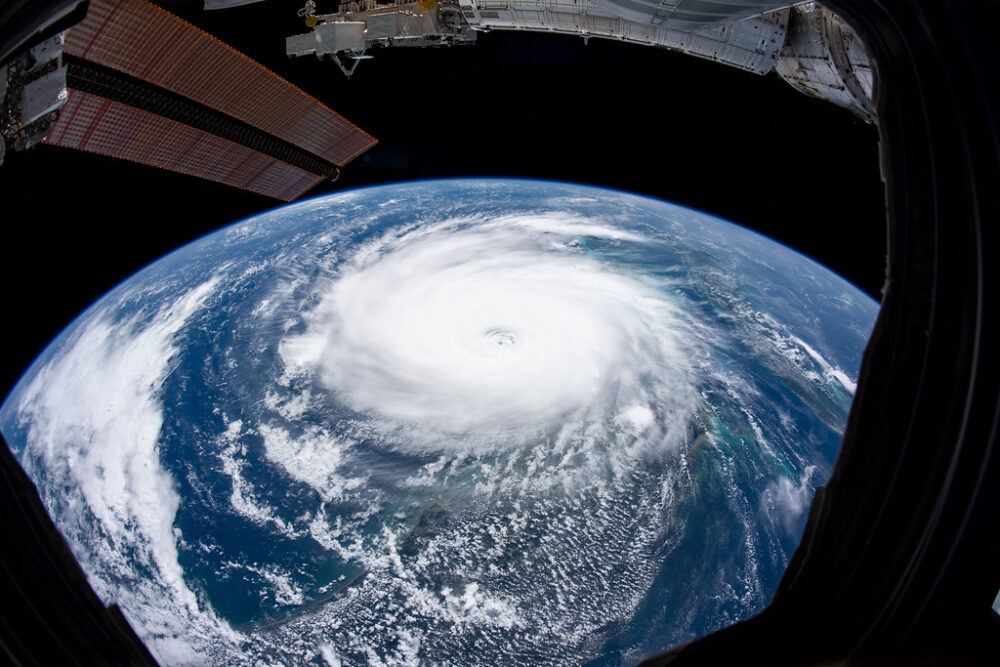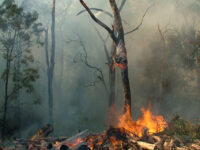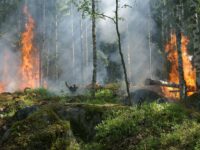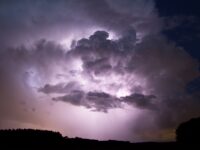Morning glories bloom in a new year, and riparian trees paint canyon walls green. Sonoran green toads screech as they start their breeding season just as hummingbirds migrate to follow the nectar in new blossoms. Soon, prickly pear cactus fruit will ripen into their famous bright-red flowers. These are just some of the beautiful sights to see at the beginning of monsoon season in the southwest U.S.
Monsoons are storms that accompany the rainy season in many parts of the world, accounting for over 50 percent of rainfall in the Southwest. The few months of monsoon season from July to September offer a break from unrelenting dry spells and deliver much-needed rains. These extreme conditions kindle a unique assemblage of vegetation and wildlife that capitalizes on a few months of rainfall. Monsoon season sparks breeding season, migration to the area, and excess water intake to store for the remainder of the year. Humans await this deluge also to resupply water, and cooler temperatures compounded by the active ecosystem draw tourists to the area, accounting for almost 200 thousand jobs in Arizona in 2019 according to the Arizona Office of Tourism. In a normal year, the benefits of these waterworks ameliorate any infrastructure damage from intense storms.
Recent years have set rainfall history, though, with 2020 having record low and 2021 record high precipitation, according to the National Weather Service. In 2020, Arizona had 6.63 inches of rain to make it the driest year since 1956. This caused a record high average temperature in August of 99.1 degrees Fahrenheit. Just a year later, the end of monsoon season in September 2021 left Arizona with a record-high 12.79 inches of rain.
In addition to temperature, the flux of precipitation also influences the amount and intensity of wildfires. Fires are typical in this region and come in shocking numbers, even for a relatively average year in rain and temperature. For example, 2019 saw 1,869 fires and 380 thousand acres of damage. Drought in 2020 produced 2,524 fires covering a whopping 980 thousand acres, while 2021 thus far has over 1,100 fires. It is difficult to correlate this data to rainfall since factors like preparedness affect wildfire spread, but what is especially interesting is the time of year these disasters occur. Of the 63 most notable fires in 2020, 36 began during monsoon season. Contrarily, four of 35 major wildfires in 2021 occurred during monsoon season. This shows that no matter the wildfire statistics before monsoon season, monsoons are good at mitigating these blazes. Unfortunately, this advantage to increased rainfall is met with adverse effects that make years like 2021 disastrous.
Monsoons can overwhelm dry environments to result in a different type of natural disaster — flash floods.
Monsoons can overwhelm dry environments to result in a different type of natural disaster — flash floods. Flash flooding occurs when dry soil cannot absorb water fast enough to accommodate torrential rain, causing flooding with powerful and dangerous currents. Canyons and dry stream beds called arroyos make the Southwest particularly prone to flooding and related hazards like mudslides. When thunderstorm conditions are present with lesser rains, hurricane-strength winds and lightning also threaten the land. Dust storms reduce visibility and air quality, and lightning-based fires spark and spread rapidly. Monsoons present enough risk themselves to seriously question their aid in relieving wildfires.
Climate change, however, is making average years less common.
With extreme consequences from both excessively wet and dry monsoon seasons, the Southwest should covet an average year. Climate change, however, is making average years less common. A 2019 Princeton study found that Southwestern atmosphere thermodynamics are trending toward extreme rain patterns as Earth warms, meaning monsoons will decrease in number and increase in intensity. Warming will also make droughts drier and rainwater deplete such that more fuel is available for wildfires.
Monsoons are one in a long list of weather patterns expected to fluctuate due to climate change. Heat waves, heavy rain, cyclones, and droughts can strike anywhere in the world and have been shown to hit less often but more severely. These extraordinary natural disasters can wreak havoc on infrastructure, disrupt communication and transportation services, and disproportionately affect vulnerable populations. In moderation, weather phenomena keep order in local ecosystems, with their human inhabitants able to prepare for these events. Climate change is disrupting this order, and without action, there will be dire consequences. This will require large-scale reformation among companies and governments. You can do your part by voting, spending responsibly, and educating yourself and others on how to be more responsible global citizens.
SOURCES:
International Journal of Wildland Fire (2020). DOI: 10.1071/WF19181
Current Climate Change Reports (2019). DOI: 10.1007/s40641-019-00135-w
Image courtesy of Flickr






